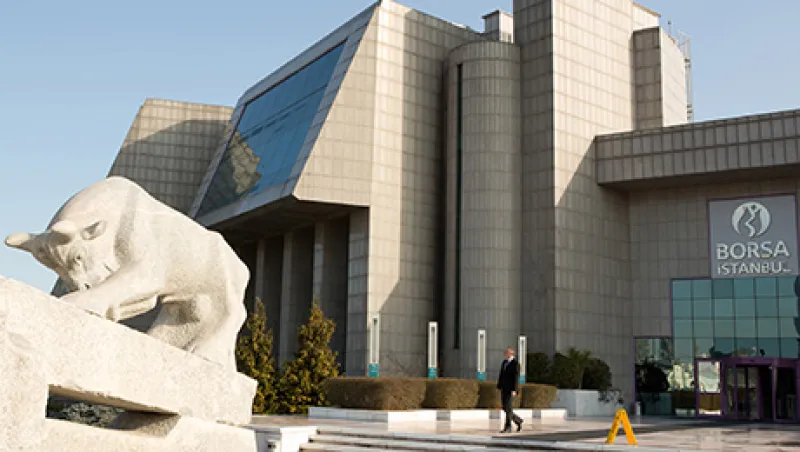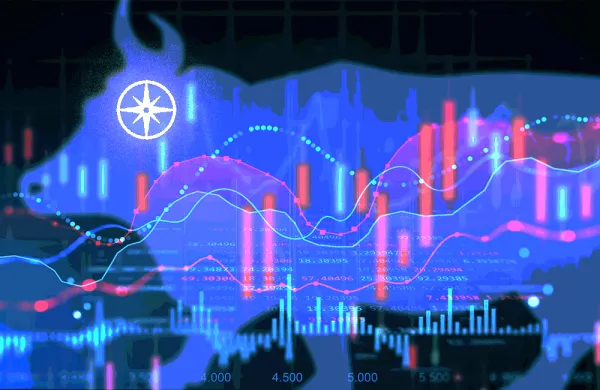Slower and more uncertain growth, along with periodic bouts of political unrest, may now be Turkey’s new normal as the country faces the consequences of long-term structural problems and underlying political divisions.
“There’ll be no return to 7 to 8 percent GDP growth, 6 percent bond rates and a 1.80 to the dollar exchange rate,” says Ozlem Derici, chief economist with brokerage Deniz Investment in Istanbul. “The new norm is going to be slower growth, higher inflation and higher bond rates.”
Signs suggest that investors are becoming comfortable with this picture, however, and are returning to Turkey after the sell-off that rattled local markets between May 2013 and this March. Indeed, the latest government data show that capital inflows rose to $8.4 billion in April, enough to cover the country’s long-time bugbear, the current-account deficit, for the first time this year.
Among the inflows, some $1.85 billion went into Turkish government debt, $2.24 billion into bank securities and $579 million into equities.
Other statistics also paint a picture of renewed confidence. The total amount of Turkish equities held by foreign investors rose from $52 billion on March 28, just before the local elections, to $63 billion on May 30. Total foreign holdings of Turkish government debt securities also rose from $44.7 billion to $51.9 billion over the same period, according to central bank data.
Meanwhile, the Borsa Istanbul 100 index has been on the rebound. It hit 81,672.05 on June 10, up 33.5 percent from a six-month low recorded on March 3, before rising tensions in neighboring Iraq, including the fall of Mosul to Sunni Muslim militants, knocked the index back. It closed at 78,092.88 on June 18.
Two-year bond yields have also tumbled, falling from 11.31 percent on March 24 to 7.99 percent on June 6, before rebounding somewhat because of the tensions in Iraq, hitting 8.3 percent on June 17.
Inflows began rising even before the March 30 local elections, which were seen as a referendum on Prime Minister Recep Tayyip Erdogan and his Justice and Development Party, known by its Turkish acronym AKP, which has strong Islamic roots. The government’s plans to raze a central Istanbul park incited a wave of protests last year that rattled markets. Political tensions then heightened with a split in the AKP, as supporters of Fethullah Gulen, a U.S.-based cleric who heads a powerful religious movement within Turkey, broke with Erdogan. Gulen’s supporters were widely believed to be responsible for a wave of corruption allegations against Erdogan and senior ministers that followed.
But the AKP won the March elections convincingly, strengthening Erdogan’s expected candidacy for the presidency in an election due to be held in August.
“Foreign participations are now on an upward trend,” says Gulay Elif Girgin, chief economist with brokerage Seker Invest in Istanbul. “Foreign investors were comfortable about the local election results, as the governing party’s decisive victory meant stability and continuity.”
Turkey’s new reality is likely to include intermittent political unrest, although not on a scale to challenge Erdogan’s leadership or that of his party, analysts say.
“People will carry on protesting when they disagree with something the government does,” adds Girgin. “But if you ask me, ‘Will we see anything like the big protests last year?’ then no, I don’t think we’ll see anything like that.”
The headline data have not been as bad as some had feared. The economy grew at a higher-than-expected rate of 4.3 percent in the first quarter, and industrial production was up 4.6 percent in April from a year earlier. Turkey’s exports were up 8 percent from a year earlier in the first five months of this year.
Clearly the economy still has dynamism. Yet there are also growing concerns over some deeper, structural issues.
“Fundamentally, we have to change our growth model,” says Gizem Ozturk Altinsac, chief economist for Garanti Securities in Istanbul. “Turkey is a story of short-term, capital-led growth, which generates huge external imbalances for us.”
Back in 2001, Turkey endured a major financial crisis as a handful of banks went bust and the Turkish lira halved in value. The government was forced to turn to the International Monetary Fund for a bailout and adopt a stringent overhaul of its banking system and public finances.
Now “the problem is the private sector balance sheets,” says Altinsac. “In 2013 around 40 percent of capital inflows were borrowing by the private sector, leaving many with open foreign exchange positions.”
The latest central bank figures show that the private sector’s outstanding long-term loans from abroad had risen $2.5 billion in the first quarter of this year, to $158.7 billion, whereas short-term loans were up $295 million, at $41.9 billion.
Aside from creating a foreign exchange risk, this external borrowing threatens to aggravate the country’s persistent current-account deficit, which grew from $49.5 billion in 2012 to a higher-than-expected $65 billion in 2013. This deficit has started to come down lately as exports have risen and domestic demand for imports has declined, but it remains a worry.
“The current-account and inflation are the two soft underbellies of the Turkish economy,” says Deniz Investment’s Derici. Although the current-account deficit can continue to be financed by capital inflows, “as soon as market sentiment changes and the flow is reversed,” she adds, “the pressure really jumps.”
Analysts also express concern over the central bank’s determination to fight inflation. Erdogan has frequently put pressure on the bank to cut interest rates. Some analysts regarded it as an ominous sign last week when several senior central bank officials — two director generals, a deputy director general and two directors — were reportedly dismissed, even though the central bank governor, Erdem Basci, quickly moved to reassure investors. “The Turkish central bank is independent, both legally and de facto,” he told reporters at a news conference on June 13.
This controversy, however, is likely to continue in the run-up to August’s presidential election, which Erdogan is widely expected to win.
The recent uncertainty does little to encourage the kind of longer-term investment Turkey needs.
“We need to change our exports to goods based less on our cheaper labor and more on our ability to produce higher value-added goods,” says Altinsac. “We need to change our imports too — move away from importing intermediate goods. We are probably right now in a classic middle-income trap: not growing by investment but by short-term consumption.”
Without this fundamental shift, Turkey may remain in a pattern of shaky growth, fluctuating annually between relative highs and lows.
“In the next couple of years,” says Derici, “I think we’ll see an average 4 percent growth rate, with high inflation and a higher exchange rate.”
Get more on emerging markets.






